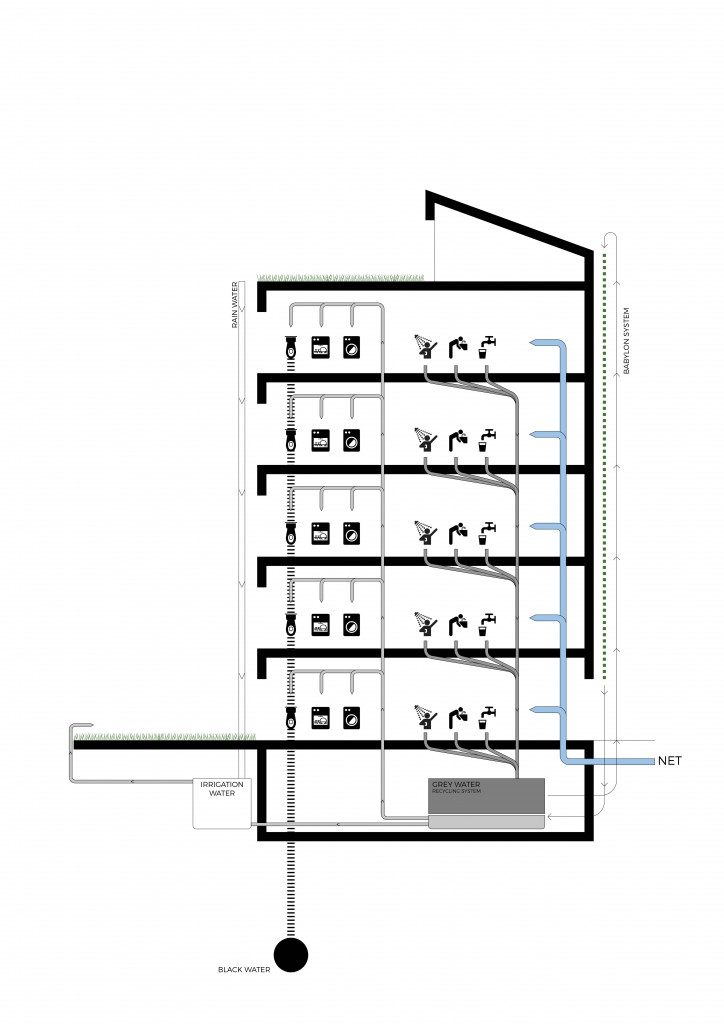A building is self-sufficient in water when consuming the least possible amount of water, and is able to get the water it needs by itself, at the lowest possible cost, so that does not require connection to the mains water supply.
First, you need to define the amount of water that each inhabitant needs on a daily basis.
In general, domestic water-uses tend to change depending on the socioeconomic level and the range can be extremely wide. The typology of domestic consumption normally includes so-called interior-uses (bathroom, kitchen, cleaning, appliances, etc.) and exterior-uses (watering gardens, pools, ornamental and other uses, etc.).
We will focus on the main water need that concerns to the interior of the building.
So in general, according to Domene and Sauri (fundacionaquae.org), domestic consumption of households in densified urban typologies (apartment blocks) present a distribution that roughly correspond to the following pattern of consumption:
32,73 % – Shower and bath.
22,33 % – Toilet.
17,17 % – Sink.
10,33 % – Washing maching.
5,45 % – Dishwasher.
5,16 % – Drinking and food preparation.
6,83 % – Other.
According to Manuel García Pérez and Ferran Sanchis, from Urban Ecology of Barcelona; threshold-demand of water should be around 100 LPD in a developed country. In Barcelona, for example, each inhabitant makes use of 101,1 litres per day.
There is a huge consumption that should be improved.
On one hand, water consumption must be reduced through new technologies (recycled water) and a more efficient use of it.
On the other hand, better habits must be added in our daily basis, adopting a amore conscious approach with the use of the water.
